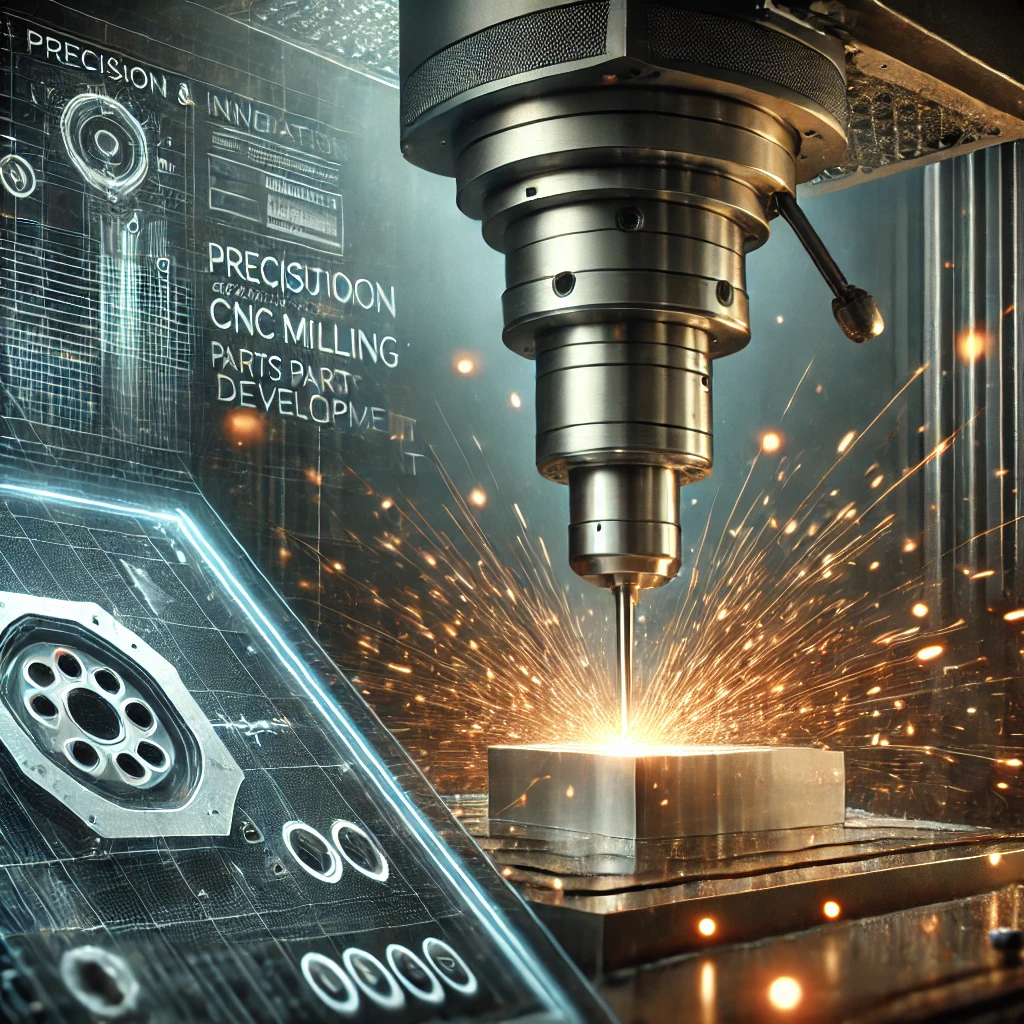In the realm of modern manufacturing, CNC (Computer Numerical Control) milling stands as a beacon of precision and innovation. As a British writer fascinated by technological advancements, I am delighted to delve into the intricate world of CNC milling parts development, where craftsmanship meets cutting-edge technology.
The Genesis of CNC Milling
The concept of CNC milling has its roots in the early 20th century, with the advent of numerical control (NC) in the 1940s. This technology revolutionized manufacturing by allowing machines to follow a set of instructions encoded on punched tape. As computers became more advanced, NC evolved into CNC, enabling unprecedented levels of precision and automation.
How CNC Milling Works
At its core, CNC milling involves the use of computer-controlled machines to remove material from a workpiece, creating complex shapes and designs with high accuracy. The process begins with a digital design, typically created using CAD (Computer-Aided Design) software. This design is then converted into a set of instructions using CAM (Computer-Aided Manufacturing) software, which guides the CNC machine in shaping the material.
CNC milling machines use rotating cutting tools to carve out the desired shape from a block of material, which can range from metals and plastics to composites and wood. The precision of CNC milling is unmatched, with tolerances often measured in micrometers, making it ideal for applications that demand exact specifications.
Advantages of CNC Milling
The benefits of CNC milling are manifold:
- Precision and Consistency: CNC milling ensures that each part is produced to exact specifications, with minimal variations. This consistency is crucial in industries such as aerospace, automotive, and medical devices.
- Efficiency: Automation allows for faster production times and reduced labor costs. CNC machines can operate continuously, producing parts with remarkable speed and efficiency.
- Complexity: CNC milling can create intricate designs that would be impossible or highly impractical with manual machining. This capability opens up new possibilities in product design and engineering.
- Flexibility: CNC machines can be reprogrammed to produce different parts, allowing manufacturers to switch between products with minimal downtime.
Innovations in CNC Milling
The field of CNC milling is continually evolving, driven by technological advancements and the demands of modern industry. Some of the latest innovations include:
- Multi-Axis Milling: Traditional CNC machines operate on three axes (X, Y, and Z). Multi-axis machines add additional axes, allowing for more complex and precise machining. Five-axis milling, for instance, can produce parts with intricate geometries and smooth finishes.
- Advanced Materials: The development of new materials, such as high-strength alloys and composites, has expanded the capabilities of CNC milling. These materials offer enhanced properties, such as increased strength and reduced weight, making them ideal for high-performance applications.
- Smart Manufacturing: Integration with IoT (Internet of Things) and AI (Artificial Intelligence) technologies is transforming CNC milling into a smarter, more connected process. Real-time monitoring and predictive maintenance enhance machine efficiency and reduce downtime.
Challenges and Future Directions
Despite its many advantages, CNC milling faces challenges such as the high initial cost of machinery and the need for skilled operators. However, ongoing advancements in automation and training are helping to mitigate these issues.
Looking ahead, the future of CNC milling is bright. Innovations in machine learning and robotics promise to further enhance precision and efficiency. As the demand for customized, high-quality parts continues to grow, CNC milling will remain at the forefront of manufacturing technology.
In conclusion, CNC milling parts development represents a perfect fusion of precision, innovation, and craftsmanship. As technology continues to advance, the capabilities of CNC milling will expand, opening up new possibilities for industries and pushing the boundaries of what is possible in manufacturing.



